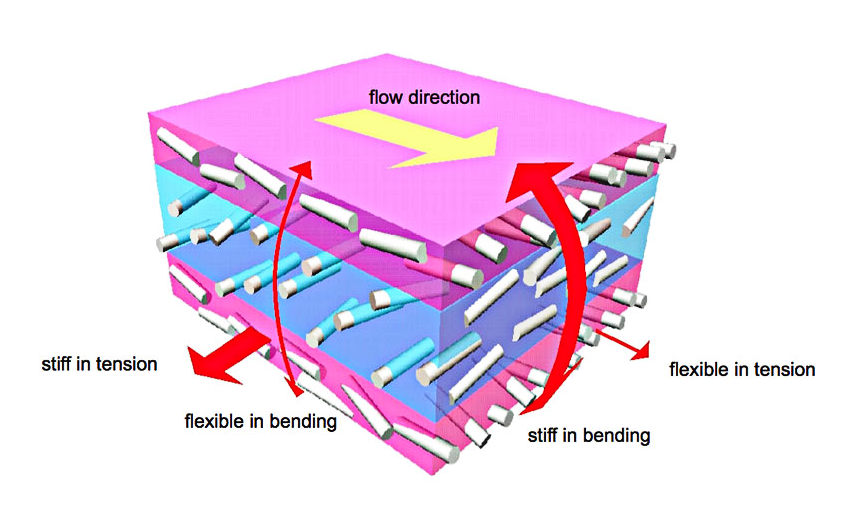The Revolution: How Injection Molded Carbon Fiber Reinforced Plastics Will Be an Auto Industry Game Changer
Both fast cycle times and predictable strength are required to make a material viable as an automotive part. When it comes to plastic car parts, the plastics industry demonstrate great weight savings (for fuel efficiency) but production time needs to be closer to the speed of a metal stamping machine if plastics are to replace its heavier metal counterpart in production car models of 200,000 or more units a year. The plastics and automotive industry know that manufacturing speed can be covered – plastics are about 50% of the volume of today’s vehicles because a dashboard or bumper guard can be created about as fast as a milk jug can be made. So let’s talk about strength.

Figure 1: Fibers in material can add strength. Image courtesy of BASF Corporation.
The chart we showed you last post proved that plastics by themselves (with no fill) can be a lot stronger than you may well believe. However, there are ways to make plastics even stronger, by filling the molten material with various fibers. Like rebar in a cement pillar or the weave of thread in cloth, filling resin with fibers provides added strength. Short (chopped) glass fibers have been used since the 1950s to give greater strength to plastic car parts, and last year the industry validated research to predict the strength and functionality of glass-filled high cycle time injection molded processing. Now using glass fiber and Moldflow® CAD software, the industry can reliably create plastic injection molding processes that make glass-filled under-body oil pans meeting the tough durability standards necessary for an SUV truck – about as quickly as making a plastic milk jug. This exciting new development means automakers can fulfill more of their strength and speed requirements than ever before. But the revolution that’s on its way – from glass fiber to carbon fiber – holds even greater promise.
Carbon fiber is much stronger than glass, and weighs much less. Just imagine the possibilities for automakers working to produce stronger, lighter cars of the future if carbon fiber were infused in injection moldable plastics to the same extent glass fibers are today! When research underway right now by the U.S. Department of Energy is completed – research detailing the positioning, flow behaviors, orientation, part thicknesses and lengths of fibers – this objective could be realized. DOE has made it clear that the use of carbon fiber reinforced plastic (CFRP) injection molded car parts will revolutionize the auto industry, noting that the next generation of carbon-fiber composites could reduce passenger car weight by an astounding 50 percent and improve fuel efficiency by about 35 percent without compromising performance or safety. Even better news for consumers: this would save more than $5,000 in fuel over the life of the car at today’s gasoline prices. In 2018, GM introduced a light, strong, carbon-fiber truck bed to its 2019 Sierra Denali pickup model.
